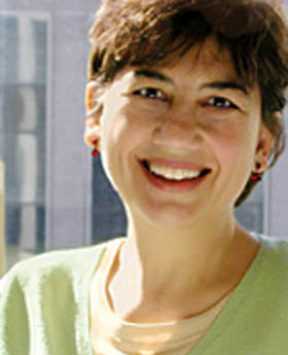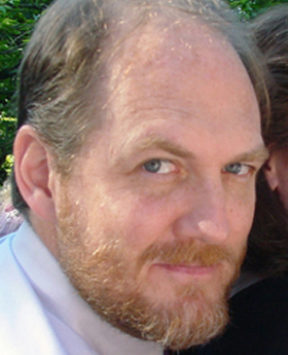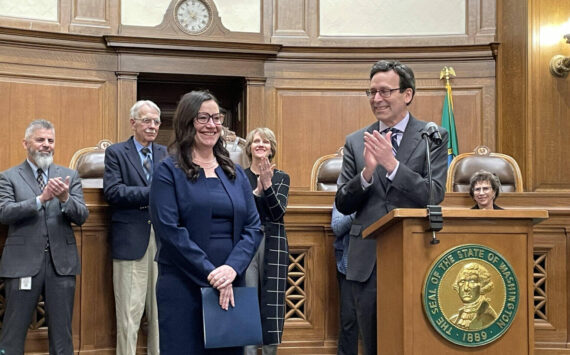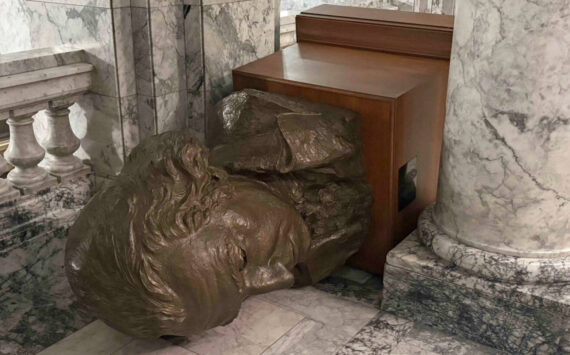As ubiquitous as the World Wide Web is today, like any other invention it began in a room with a few individuals trying to make a part of their job a little easier.
One of those men was a young MIT graduate from Norway.
In order to conceptualize how this massive medium evolved, it helps to look through the eyes of one of its parents who helped form and shape the Web in its infancy.
Håkon Wium Lie (pronounced Lee) caught wind of an endeavor called the WWW project, be-ing advanced at CERN, the European Organ-ization for Nuclear Research, the worlds largest par-ticle physics center – and the cradle of the Web.
He left his job at Norwegian Telecom Research, which he took after receiving his Masters in Visual Studies from MIT, and became a shaper of the universe of network-accessible information, the embodiment of human knowledge known as the World Wide Web.
The Web was first developed as a tool for collaboration in the physics community. From there it spread rapidly to government and education.
Once its commercial use was recognized, most notably by those early adopters in the sex industry, the Web exploded into every household, school and business.
Håkon is a Web pioneer, having first suggested the concept of Cascading Style Sheets in 1994 while at CERN, and he later joined W3C (the World Wide Web Consortium) to further strengthen the standards and is on their Advisory Board.
In 1999, he was listed among Technology Reviews Top 100 innovators of the next century and is one of the World Economic Forum’s Technology Pioneers.
Håkon is also the author of Cascading Style Sheets: Designing for the Web (2nd ed., 1999) and The Electronic Broadsheet-All the News that fit the Display (1991).
He is the Chief Technology Officer of Opera Software since 1999.
Opera is an industry leader in the development of Web browsers for the desktop and device markets.
Opera is the primary browser for millions of end-users because it is considered faster, smaller and more standards-compli-ant than other browsers.
It is third in popularity behind Internet Explorer and Netscape.
From his head-quarters in Oslo, Norway, Opera CTO Håkon Wium Lie gave us his first-person account of the early days at CERN.
Q: Youre a Web pioneer, having worked on the WWW project at CERN, the cradle of the Web. Exciting times?
Håkon: Yes. I stumbled across the web in 1992 and realized this was going to change my world.
I wanted to help the Web move forward technically so I went to CERN, the physics lab outside of Geneva where the Web started.
At CERN, Tim Berners-Lee worked on this amazing system to help physicists collaborate.
He wanted it to reach outside the physics community as well, so he named it the World Wide Web.
Those were quite amazing days in 93 and 94 being one of three people in a room hacking up these early specifications.
Q: What did you do specifically at CERN?
Håkon: I started working on a concept called Style Sheets to help improve aesthetics on the Web.
Before that, the Web didnt really know anything about typography, about fonts and colors and margins.
This came out of a research community where semantics were much more important than presentation.
Even images werent part of the Web at that point.
In order to improve aesthetics, I started creating Cascading Style Sheets.
Q: What was your motivation to come up with the concept of CSS and its genesis?
Håkon: Theres two motivations. One is to create a more beautiful Web where fonts and colors can blend, where you can take things we learned from paper-based typography and bring it to the screen.
Secondly, we wanted to preserve good mark-up. HTML has tags.
A lot of people started to use images instead of tags because they wanted to control typography.
Instead of writing a headline, they put the headline into an image.
This is bad for many reasons: It takes more space, its not accessible to blind people, etc.
So in order to preserve those mark-up tags, we needed to also give authors some good typographic tools.
Q. How has the whole CSS language being supported?
Håkon: Not too bad – now. It took a long time for Microsoft and Netscape to add support for it – about three years.
And still the quality was poor. I worked at W3C (World Wide Web Consortium ) at the time, and I worked with the guys at Netscape and the guys at Microsoft to add support for CSS, but it took longer than it should have taken.
Then Opera, the Web browser, came along and they implemented CSS in three months and did a better job than Microsoft had done in three years.
I said, Wow, these guys really have a great technology. and decided the Web doesnt really need more specifications. It needs more implementations.
So I joined the Opera team.
Next Fridays Technology column: A look at the Opera browser and what its like building what is now almost universally regarded as the third Web browser after Microsofts Internet Explorer and Netscapes Navigator – through the eyes of its Chief Technical Officer and man who helped forge the World Wide Web, Håkon Lie.
To learn more about the man behind the web pioneer, check out Håkons personal Web page at:
http://people.opera.com/howcome.
A full audio interview with Håkon Lie can be heard at:
www.webtalkguys.com.
Dana Greenlee writes about technology every Friday in the Index. WebTalkGuys, a Tacoma-based commercial-free talk show which features technology news and interviews, can be heard Saturdays from 11 a.m. to noon, on KLAY 1180 AM in the Tacoma/Seattle area. Past show and interviews are also Webcast via the Internet at:
www.webtalkguys.com.
This week in Dana Greenlee's column~ Lending a hand at the birth of the Web
Tags: Advisory Board, author, beautiful Web, Cascading Style Sheets, Chief Technical Officer, chief technology officer, Dana Greenlee, Geneva, good typographic tools, HTML, Internet Explorer, KLAY 1180 AM, Microsoft, MIT, Norway, Opera CTO, Opera Software, Oslo, personal Web page, s Internet Explorer, Seattle, Tacoma, technology news, Technology Review, Then Opera, Tim Berners-Lee, Web As, Web browser, Web browsers, Web Consortium, Web didnt, Web doesnt, Web move, Web pioneer, WebTalkGuys, World Economic Forum, worlds largest par-ticle physics center, www.webtalkguys.com






